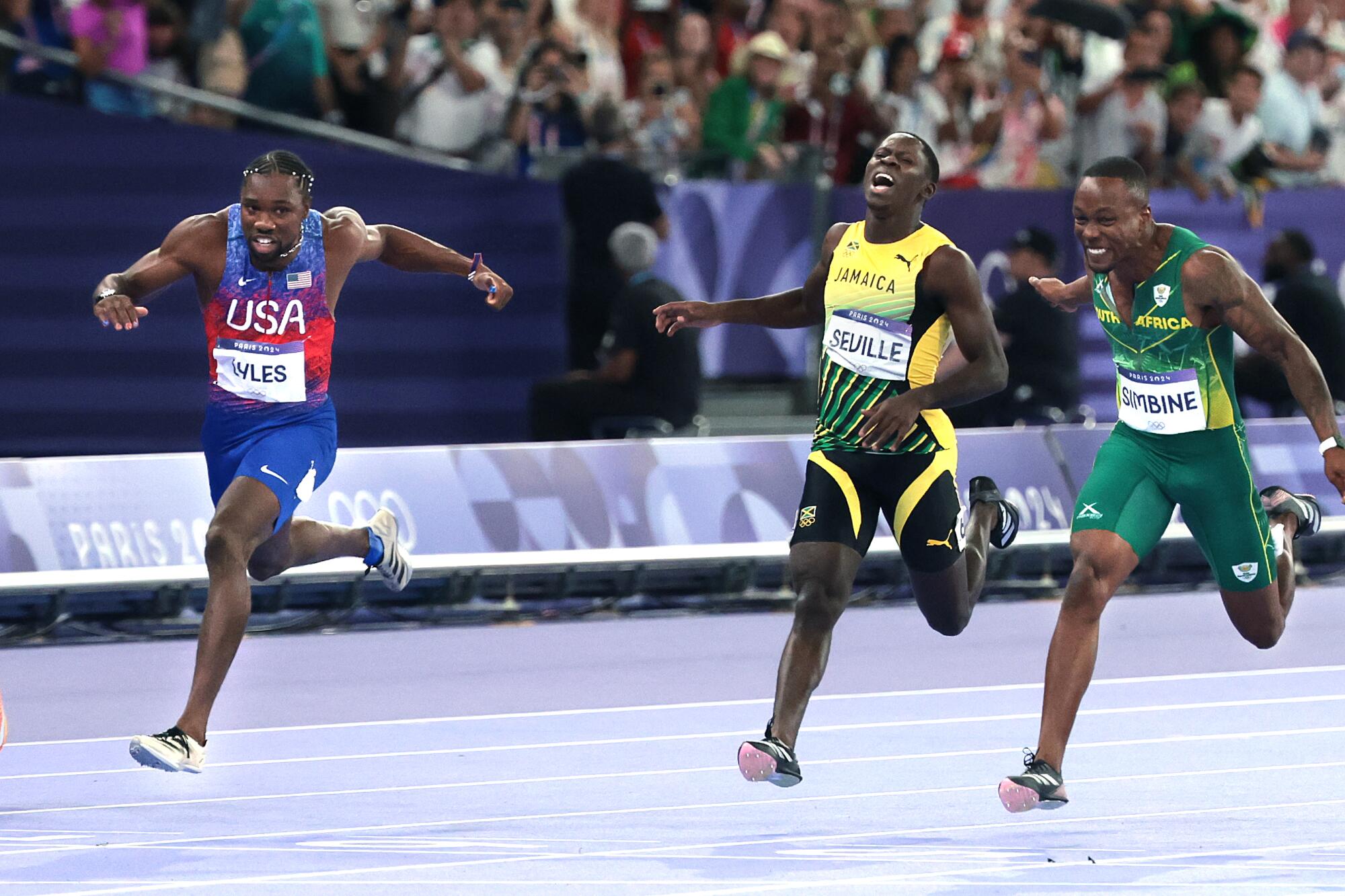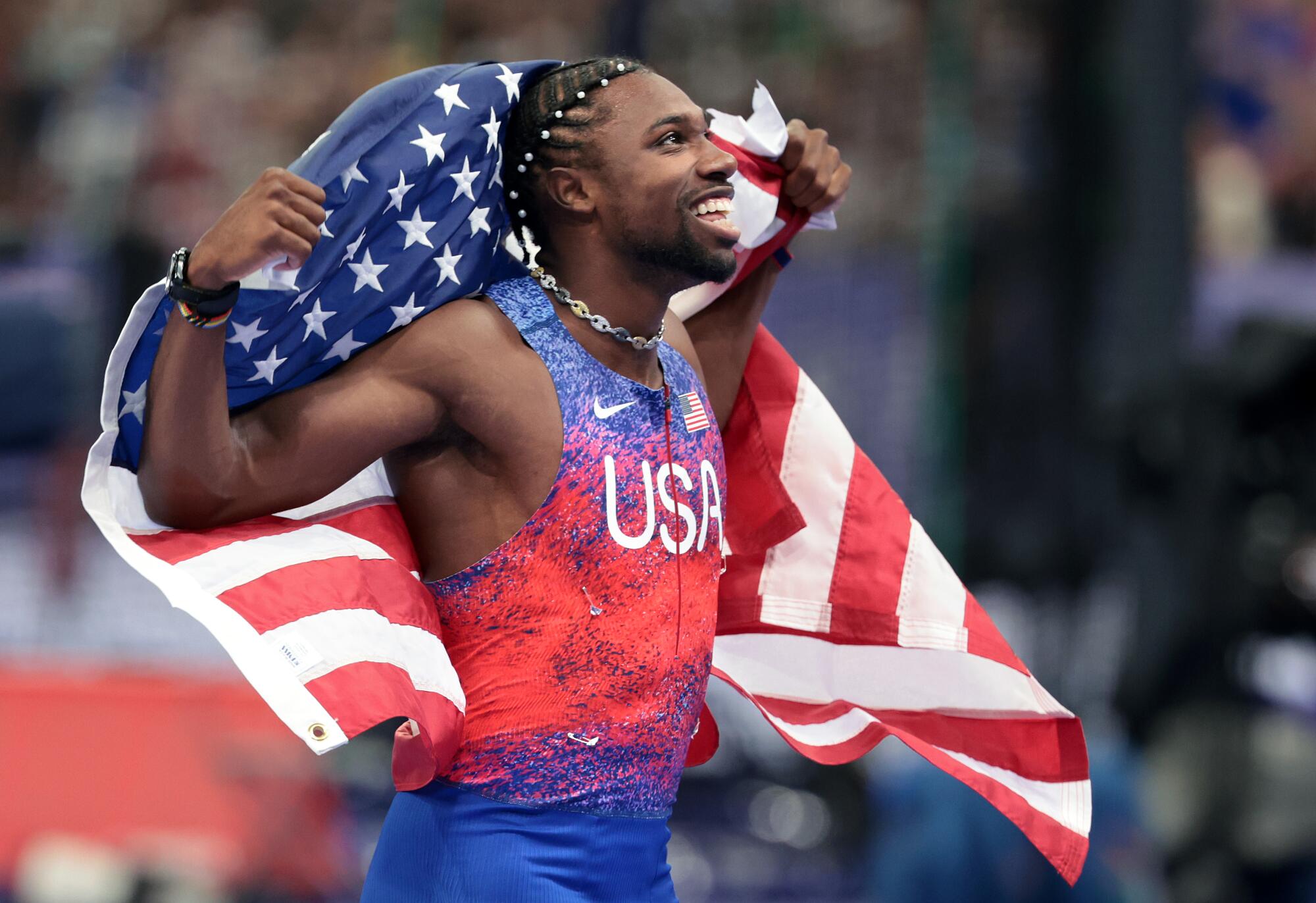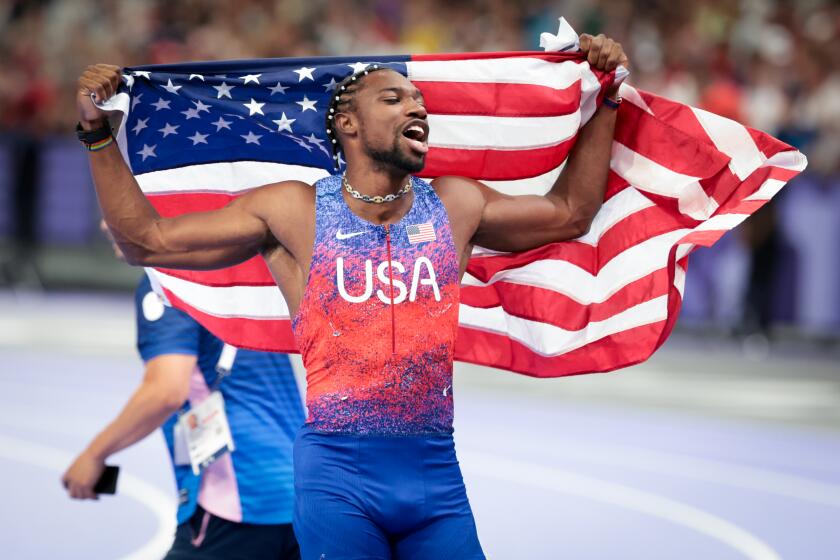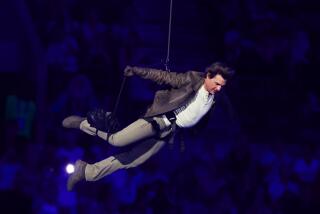
- Share via
PARIS — The instant that Noah Lyles crossed the finish line in Sunday night’s heart-stopping 100-meter final at the 2024 Summer Olympics, the clock started on a completely different sort of race.
With the American sprinter and his rivals bunched so tightly at the end, it was impossible to divine a winner with the naked eye.
So, far above the track, a team of officials immediately turned to their computer screens and got to work determining an order of finish.
“All of this happens, obviously, very fast,” said Alain Zobrist of Omega, the Swiss company contracted to keep time at the Games. “There is a lot of pressure.”
The photo finish process begins with three cameras — main, backup and infield — aimed at the track from different angles. Officials need multiple views in case one runner is partially blocking another.
The cameras take 40,000 pictures per second, beaming the images to a temporary, three-level structure built into the stands at Stade de France. Zobrist calls them “the quietest rooms in the stadium. Everyone is extremely focused.”
On one level, a main timekeeper, head judge and team leader scrutinize footage from the main camera. On another level, an official studies the infield and backup perspectives.
Using the left and right arrows on their keyboards, they can scroll back-and-forth between images, zooming in and out where necessary. The pictures highlight a critical area within five millimeters of the finish, but humans must decide.
American Noah Lyles, who long bragged he was the world’s fastest man, won the men’s 100-meter final in a photo finish at the Paris Olympics on Sunday.
“The head judge is making the call and everyone else is confirming,” Zobrist said.
On Sunday night, that meant looking past the jumble of feet, hands and heads because, under international track rules, a runner does not finish until his or her torso crosses the line.
As the seconds ticked by — about 10 of them — runners on the track and thousands of spectators in the stands watched the stadium’s video boards. Lyles did not expect his name to be atop the list.
“I wasn’t ready to see it,” he recalled. “And that’s the first time I’ve ever said that in my head, like I wasn’t ready to see it.”
NBC announcer Leigh Diffey — who would later apologize — had made a similar mistake, telling a live television audience in the U.S. that “Jamaica’s going to do it. Kishane Thompson is a gold medalist!”
But timekeepers found the clear view they were searching for, along with exact times down to the thousandth of a second stamped on each image. They took an extra moment to double-check.

“As soon as you officialize,” Zobrist said, “there is no way back.”
A roar filled the stadium when the photo finish results finally appeared. Lyles had edged out Thompson of Jamaica, 9.784 seconds to 9.789. Another U.S. sprinter, Fred Kerley, finished third just 0.02 seconds back.
Timing officials still had work to do. On the third level of their temporary facility, they used motion sensors and a positioning system to better understand what had transpired on the track.
With a reaction time of 0.178 seconds, Lyles started relatively slowly out of the blocks. But he reached 26.7 miles per hour at about 65 meters and unlike Thompson, who decelerated toward the end, was able to more or less maintain his peak speed. This allowed him to take the lead at about nine seconds and lean for the line.
The entire race took slightly less time than figuring out who won.
More to Read
Go beyond the scoreboard
Get the latest on L.A.'s teams in the daily Sports Report newsletter.
You may occasionally receive promotional content from the Los Angeles Times.








